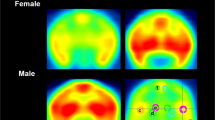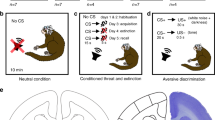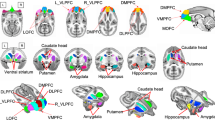Abstract
We investigated the effect of cocaine- and amphetamine-regulated transcript (CART) peptide on depression-like behavior in socially isolated and olfactory bulbectomized (OBX) rats. Administration of CART (54–102) into the lateral ventricle (50–100 ng) or central nucleus of amygdala (CeA) (10–20 ng) caused significant decrease in immobility time in the forced swim test (FST) without influencing locomotion, suggesting antidepressant-like effect. Social isolation as well as OBX models were undertaken to produce depression-like conditions. Although isolation reared (6 weeks) rats showed significant increase in immobility time in FST, OBX animals exhibited hyperactivity (increase in the ambulation, rearing, grooming, and defecation scores) on day 14 in the open-field test. The isolation- or OBX-induced depression-like phenotypes were reversed following acute or subchronic treatment of CART, respectively, given via intracerebroventricular and intra-CeA routes. Drastic reduction in CART-immunoreactivity was observed in most cells in the paraventricular (PVN), arcuate and Edinger–Westphal nuclei of the socially isolated and OBX animals. Although the fibers in the PVN showed variable response, those in ARC and prefrontal cortex did not change. The CART-immunoreactive fibers in the locus coeruleus also showed highly significant reduction. However, dramatic increase in CART-immunoreactive fibers was noticed in the CeA in both the experimental models. The response by the cells and fibers in the periventricular area and perifornical nucleus in the OBX and socially isolated rats was variable. The study underscores the possibility that endogenous CART system might play a major role in mediating symptoms of depression.
Similar content being viewed by others
Log in or create a free account to read this content
Gain free access to this article, as well as selected content from this journal and more on nature.com
or
References
Aggleton JP (1993). The contribution of the amygdala to normal and abnormal emotional states. Trends Neurosci 16: 328–333.
Baker RA, Herkenham M, Brady LS (1996). Effects of long-term treatment with antidepressant drugs on proopiomelanocortin and neuropeptide Y mRNA expression in the hypothalamic arcuate nucleus of rats. J Neuroendocrinol 8: 337–343.
Balkan B, Gozen O, Yararbas G, Koylu EO, Akinturk S, Kuhar MJ et al (2006). CART expression in limbic regions of rat brain following forced swim stress: sex differences. Neuropeptides 40: 185–193.
Balkan B, Koylu E, Pogun S, Kuhar MJ (2003). Effects of adrenalectomy on CART expression in the rat arcuate nucleus. Synapse 50: 14–19.
Brenes Saenz JC, Villagra OR, Fornaguera Trias J (2006). Factor analysis of forced swimming test, sucrose preference test and open field test on enriched, social and isolated reared rats. Behav Brain Res 169: 57–65.
Chaki S, Kawashima N, Suzuki Y, Shimazaki T, Okuyama S (2003). Cocaine- and amphetamine-regulated transcript peptide produces anxiety-like behavior in rodents. Eur J Pharmacol 464: 49–54.
Choi SH, Kwon BS, Lee S, Houpt TA, Lee HT, Kim DG et al (2003). Systemic 5-hydroxy-L-tryptophan down-regulates the arcuate CART mRNA level in rats. Regul Pept 115: 73–80.
Commons KG, Connolley KR, Valentino RJ (2003). A neurochemically distinct dorsal raphe-limbic circuit with a potential role in affective disorders. Neuropsychopharmacology 28: 206–215.
Cone RD (2005). Anatomy and regulation of the central melanocortin system. Nature 8: 571–578.
Couceyro PR, Koylu EO, Kuhar MJ (1997). Further studies on the anatomical distribution of CART by in situ hybridisation. J Chem Neuroanat 12: 229–241.
Dandekar MP, Singru PS, Kokare DM, Lechan RM, Thim L, Clausen JT et al (2008a). Importance of cocaine- and amphetamine-regulated transcript peptide in the central nucleus of amygdala in anxiogenic responses induced by ethanol withdrawal. Neuropsychopharmacology 33: 1127–1136.
Dandekar MP, Singru PS, Kokare DM, Subhedar NK (2008b). Transient up-regulation of cocaine- and amphetamine-regulated transcript peptide (CART) immunoreactivity following ethanol withdrawal in rat hypothalamus. Brain Res; doi:10.1016/j.brainres. 2008.09.023.
Dannlowski U, Ohrmann P, Bauer J, Deckert J, Hohoff C, Kugel H et al (2008). 5-HTTLPR biases amygdala activity in response to masked facial expressions in major depression. Neuropsychopharmacology 33: 418–424.
Dominguez G, Vicentic A, Del Giudice EM, Jaworski J, Hunter RG, Kuhar MJ (2004). CART peptides: modulators of mesolimbic dopamine, feeding, and stress. Ann N Y Acad Sci 1025: 363–369.
Douglass J, McKinzie AA, Couceyro P (1995). PCR differential display identifies a rat brain mRNA that is transcriptionally regulated by cocaine and amphetamine. J Neurosci 15: 2471–2481.
Eskay RL, Giraud P, Oliver C, Brown-Stein MJ (1979). Distribution of alpha-melanocyte-stimulating hormone in the rat brain: evidence that alpha-MSH-containing cells in the arcuate region send projections to extra-hypothalamic areas. Brain Res 178: 55–67.
Goyal SN, Kokare DM, Chopde CT, Subhedar NK (2006). Alpha-melanocyte stimulating hormone antagonizes antidepressant-like effect of neuropeptide Y in Porsolt's test in rats. Pharmacol Biochem Behav 85: 369–377.
Hirani K, Sharma AN, Jain NS, Ugale RR, Chopde CT (2005). Evaluation of GABAergic neuroactive steroid 3α-hydroxy-5α-pregnane-20-one as a neurobiological substrate for the anti-anxiety effect of ethanol in rats. Psychopharmacology 180: 267–278.
Huang TY, Lin CH (2006). Role of amygdala MAPK activation on immobility behavior of forced swim rats. Behav Brain Res 173: 104–111.
Hunter RG, Bellani R, Bloss E, Costa A, Romeo RD, McEwen BS (2007). Regulation of CART mRNA by stress and corticosteroids in the hippocampus and amygdala. Brain Res 1152: 234–240.
Hunter RG, Jones D, Vicentic A, Hue G, Rye D, Kuhar MJ (2006). Regulation of CART mRNA in the rat nucleus accumbens via D3 dopamine receptors. Neuropharmacology 50: 858–864.
Hwang BH, Katner J, Iyengar S (2005). Corticotropin-releasing factor mRNA and substance P receptor binding in the paraventricular hypothalamic nucleus, central nucleus of the amygdala, and locus coeruleus of Sprague-Dawley rats following restraint-induced stress. J Mol Neurosci 25: 239–250.
Jaworski JN, Kimmel HL, Mitrano DA, Tallarida RJ, Kuhar MJ (2007). Intra-VTA CART 55–102 reduces the locomotor effect of systemic cocaine in rats: an isobolographic analysis. Neuropeptides 41: 65–72.
Jaworski JN, Vicentic A, Hunter RG, Kimmel HL, Kuhar MJ (2003). CART peptides are modulators of mesolimbic dopamine and psychostimulants. Life Sci 73: 741–747.
Jones DC, Kuhar MJ (2006). Cocaine-amphetamine-regulated transcript expression in the rat nucleus accumbens is regulated by adenylyl cyclase and the cyclic adenosine 5′-monophosphate/protein kinase a second messenger system. J Pharmacol Exp Ther 317: 454–461.
Karim A, Arslan MI (2000). Isolation modifies the behavioural response in rats. Bangladesh Med Res Counc Bull 26: 27–32.
Kelly JP, Wrynn A, Leonard BE (1997). The olfactory bulbectomized rat as a model of depression: an update. Pharmacol Ther 74: 299–316.
Kim H, Whang WW, Kim HT, Pyun KH, Cho SY, Hahm DH et al (2003). Expression of neuropeptide Y and cholecystokinin in the rat brain by chronic mild stress. Brain Res 983: 201–208.
Kimmel HL, Gong W, Vechia SD, Hunter RG, Kuhar MJ (2000). Intra-ventral tegmental area injection of rat cocaine and amphetamine-regulated transcript peptide 55–102 induces locomotor activity and promotes conditioned place preference. J Pharmacol Exp Ther 294: 784–792.
Kokare DM, Chopde CT, Subhedar NK (2006). Participation of α-melanocyte stimulating hormone in ethanol-induced anxiolysis and withdrawal anxiety in rats. Neuropharmacology 50: 536–545.
Kokare DM, Dandekar MP, Chopde CT, Subhedar N (2005). Interaction between neuropeptide Y and alpha-melanocyte stimulating hormone in amygdala regulates anxiety in rats. Brain Res 1043: 107–114.
Kokare DM, Singru PS, Dandekar MP, Chopde CT, Subhedar NK (2008). Involvement of alpha-melanocyte stimulating hormone (α-MSH) in differential ethanol exposure and withdrawal related depression in rat: neuroanatomical-behavioral correlates. Brain Res 1216: 53–67.
Koob GF, Ehlers CL, Kupfer DJ (1989). Animal Models of Depression. Birkhauser: Boston.
Koylu EO, Balkan B, Kuhar MJ, Pogun S (2006). Cocaine and amphetamine regulated transcript (CART) and the stress response. Peptides 27: 1956–1969.
Koylu EO, Couceyro PR, Lambert PD, Kuhar MJ (1998). Cocaine- and amphetamine-regulated transcript peptide immunohistochemical localization in the rat brain. J Comp Neurol 391: 115–132.
Koylu EO, Couceyro PR, Lambert PD, Ling NC, DeSouza EB, Kuhar MJ (1997). Immunohistochemical localization of novel CART peptides in rat hypothalamus, pituitary and adrenal gland. J Neuroendocrinol 9: 823–833.
Kozicz T (2003). Neurons colocalizing urocortin and cocaine- and amphetamine-regulated transcript immunoreactivities are induced by acute lipopolysaccharide stress in the Edinger-Westphal nucleus in the rat. Neuroscience 116: 315–320.
Kristensen P, Judge ME, Thim L, Ribel U, Christjansen KN, Wulff BS et al (1998). Hypothalamic CART is a new anorectic peptide regulated by leptin. Nature 393: 72–76.
Kuhar MJ, Dall Vechia SE (1999). CART peptides: novel addiction and feeding-related neuropeptides. Trends Neurosci 22: 316–320.
Kuriyama G, Takekoshi S, Tojo K, Nakai Y, Kuhar MJ, Osamura RY (2004). Cocaine- and amphetamine-regulated transcript peptide in the rat anterior pituitary gland is localized in gonadotrophs and suppresses prolactin secretion. Endocrinology 145: 2542–2550.
Lakatos A, Prinster S, Vicentic A, Hall RA, Kuhar MJ (2005). Cocaine- and amphetamine-regulated transcript (CART) peptide activates the extracellular signal-regulated kinase (ERK) pathway in AtT20 cells via putative G-protein coupled receptors. Neurosci Lett 384: 198–202.
Ma Z, Pearson E, Tao R (2007). CART peptides increase 5-hydroxytryptamine in the dorsal raphe and nucleus accumbens of freely behaving rats. Neurosci Lett 417: 303–307.
Makino S, Baker RA, Smith MA, Gold PW (2000). Differential regulation of neuropeptide Y mRNA expression in the arcuate nucleus and locus coeruleus by stress and antidepressants. J Neuroendocrinol 12: 387–395.
Miraglia del Giudice E, Santoro N, Fiumani P, Dominguez G, Kuhar MJ, Perrone L (2006). Adolescents carrying a missense mutation in the CART gene exhibit increased anxiety and depression. Depress Anxiety 23: 90–92.
O’Connor WT, Leonard BE (1988). Behavioural and neuropharmacological properties of the dibenzapines, desipramine and lofepramine: studies on the olfactory bulbectomized rat model of depression. Prog Neuro-Psychopharmacol Biol Psychiatry 12: 41–51.
O’Donohue TL, Miller RL, Jacobowitz DM (1979). Identification, characterization and stereotaxic mapping of intraneuronal alpha-melanocyte stimulating hormone-like immunoreactive peptides in discrete regions of the rat brain. Brain Res 176: 101–123.
Orsetti M, Di Brisco F, Canonico PL, Genazzani AA, Ghi P (2008). Gene regulation in the frontal cortex of rats exposed to the chronic mild stress paradigm, an animal model of human depression. Eur J Neurosci 27: 2156–2164.
Owens MJ, Nemeroff CB (1993). The role of corticotropin-releasing factor in the pathophysiology of affective and anxiety disorders: laboratory and clinical studies. Ciba Found Symp 172: 296–316.
Pae CU, Lee C, Paik IH (2007). Therapeutic implication of cocaine- and amphetamine-regulated transcript (CART) in the treatment of depression. Med Hypotheses 69: 132–135.
Paxinos G, Watson C (1998). The Rat Brain in Stereotaxic Coordinates. Academic Press: London.
Porsolt RD, Anton G, Blavet N, Jalfre M (1978). Behavioural despair in rats: a new model sensitive to antidepressant treatments. Eur J Pharmacol 47: 379–391.
Redmond AM, Kelly JP, Leonard BE (1999). The determination of the optimal dose of milnacipran in the olfactory bulbectomized rat model of depression. Pharmacol Biochem Behav 62: 619–623.
Ruedi-Bettschen D, Feldon J, Pryce CR (2004). The impaired coping induced by early deprivation is reversed by chronic fluoxetine treatment in adult Fischer rats. Behav Pharmacol 15: 413–421.
Sarkar S, Wittmann G, Fekete C, Lechan RM (2004). Central administration of cocaine- and amphetamine-regulated transcript increases phosphorylation of cAMP response element binding protein in corticotropin-releasing hormone-producing neurons but not in prothyrotropin-releasing hormone-producing neurons in the hypothalamic paraventricular nucleus. Brain Res 999: 181–192.
Sergeyev V, Fetissov S, Mathé AA, Jimenez PA, Bartfai T, Mortas P et al (2005). Neuropeptide expression in rats exposed to chronic mild stresses. Psychopharmacology 178: 115–124.
Shabanov PD, Roik RO (2005). Evaluation of antidepressant activity in a model of depression-like state due to social isolation in rats. Eksp Klin Farmakol 68: 11–15.
Smith SM, Vaughan JM, Donaldson CJ, Rivier J, Li C, Chen A et al (2004). Cocaine- and amphetamine-regulated transcript activates the hypothalamic pituitary-adrenal axis through a corticotropin-releasing factor receptor-dependent mechanism. Endocrinology 145: 5202–5209.
Song C, Earley B, Leonard BE (1996). The effects of central administration of neuropeptide Y on behavior, neurotransmitter, and immune functions in the olfactory bulbectomized rat model of depression. Brain Behav Immun 10: 1–16.
Song C, Leonard BE (1995). Interleukin-2-induced changes in behavioural, neurotransmitter, and immunological parameters in the olfactory bulbectomized rat. Neuroimmunomodulation 2: 263–273.
Song C, Leonard BE (2005). The olfactory bulbectomised rat as a model of depression. Neurosci Biobehav Rev 29: 627–647.
Stanek LM (2006). Cocaine- and amphetamine-related transcript (CART) and anxiety. Peptides 27: 2005–2011.
Stone EA, Quartermain D, Lin Y, Lehmann ML (2007). Central a1-adrenergic system in behavioral activity and depression. Biochem Pharmacol 73: 1063–1075.
Tanaka M, Telegdy G (2008). Antidepressant-like effects of the CRF family peptides, urocortin 1, urocortin 2 and urocortin 3 in a modified forced swimming test in mice. Brain Res Bull 75: 509–512.
Thim L, Nielsen PF, Judge ME, Andersen AS, Diers I, Egel-Mitani M et al (1998). Purification and characterization of a new hypothalamic satiety peptide, cocaine and amphetamine regulated transcript (CART), produced in yeast. FEBS Lett 428: 263–268.
Vaarmann A, Kask A (2001). Cocaine- and amphetamine-regulated transcript peptide (CART(62–76))-induced changes in regional monoamine levels in rat brain. Neuropeptides 35: 292–296.
Vicentic A, Dominguez G, Hunter RG, Philpot K, Wilson M, Kuhar MJ (2004). Cocaine- and amphetamine-regulated transcript peptide levels in blood exhibit a diurnal rhythm: regulation by glucocorticoids. Endocrinology 145: 4119–4124.
Vrang N (2006). Anatomy of hypothalamic CART neurons. Peptides 27: 1970–1980.
Wu B, Hu S, Yang M, Pan H, Zhu S (2006). CART peptide promotes the survival of hippocampal neurons by upregulating brain derived neurotrophic factor. Biochem Biophys Res Commun 347: 656–661.
Yang SC, Pan JT, Li HY (2004). CART peptide increases the mesolimbic dopaminergic neuronal activity: a microdialysis study. Eur J Pharmacol 494: 179–182.
Acknowledgements
We thank Dr Lars Thim, Department of Assay and Cell Technology, Novo Nordisk A/S, Bagsvaerd, Denmark and Dr Jes Thorn Clausen, Department of Protein Chemistry, Novo Nordisk A/S, Bagsvaerd, Denmark for the generous gift of the CART peptide and antibody. This study was supported by the grant from the Department of Science and Technology (SR/SO/AS/40/2007), Government of India, New Delhi, India.
Author information
Authors and Affiliations
Corresponding author
Additional information
DISCLOSURE/CONFLICT OF INTEREST
The authors declare that except for income received from the primary employer no financial support or compensation has been received from any individual or corporate entity over the past 3 years for research or professional service and there are no personal financial holdings that could be perceived as constituting a potential conflict of interest.
Supplementary Information accompanies the paper on the Neuropsychopharmacology website (http://www.nature.com/npp)
Rights and permissions
About this article
Cite this article
Dandekar, M., Singru, P., Kokare, D. et al. Cocaine- and Amphetamine-Regulated Transcript Peptide Plays a Role in the Manifestation of Depression: Social Isolation and Olfactory Bulbectomy Models Reveal Unifying Principles. Neuropsychopharmacol 34, 1288–1300 (2009). https://doi.org/10.1038/npp.2008.201
Received:
Revised:
Accepted:
Published:
Issue date:
DOI: https://doi.org/10.1038/npp.2008.201
Keywords
This article is cited by
-
Neuroplastic Changes in the Superior Colliculus and Hippocampus in Self-rewarding Paradigm: Importance of Visual Cues
Molecular Neurobiology (2022)
-
CART neurons in the lateral hypothalamus communicate with the nucleus accumbens shell via glutamatergic neurons in paraventricular thalamic nucleus to modulate reward behavior
Brain Structure and Function (2017)
-
Effect of Desipramine and Citalopram Treatment on Forced Swimming Test-Induced Changes in Cocaine- and Amphetamine-Regulated Transcript (CART) Immunoreactivity in Mice
Neurochemical Research (2014)
-
Central regulation of feeding behavior during social isolation of rat: evidence for the role of endogenous CART system
International Journal of Obesity (2011)



